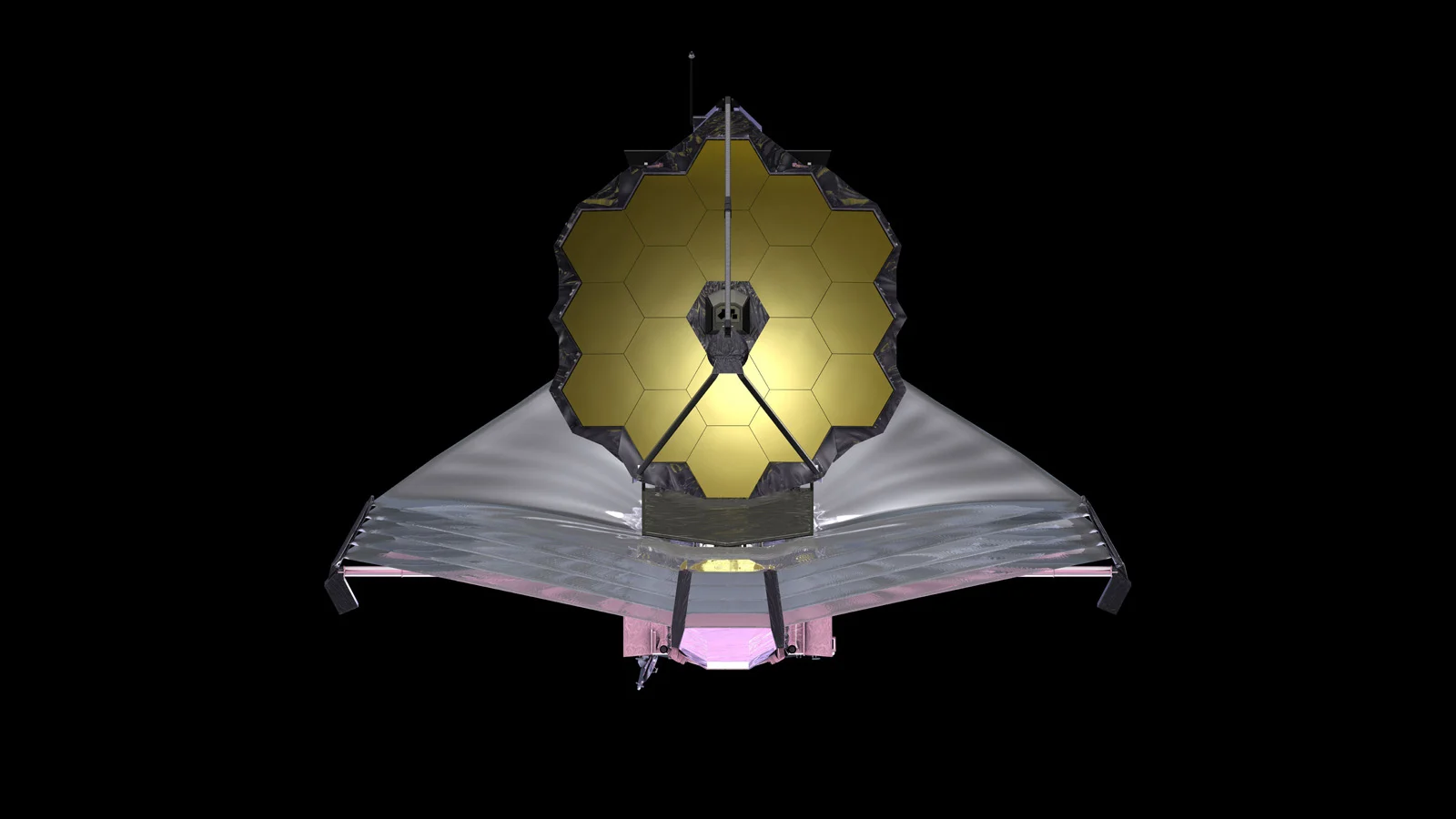
Astronomers rejoice! Webb Telescope's honeycomb mirrors are now fully deployed
Of the many steps before we see the first images from the James Webb Space Telescope, this milestone was one of the most critical to the mission.
Last Saturday, the entire space and astronomy community released a collective sigh of relief as the James Webb Space Telescope's primary mirror fully deployed. Having reached this crucial milestone, Webb is now ready to begin testing so it can revolutionize our ideas of the universe.
Webb, which launched early Christmas morning, is the most powerful and complex telescope ever put into space. With its primary mirror over 15 times the size of the Hubble Space Telescope's, Webb will look farther out into the universe and further back in time and help solve some of the longest-standing mysteries of the cosmos.
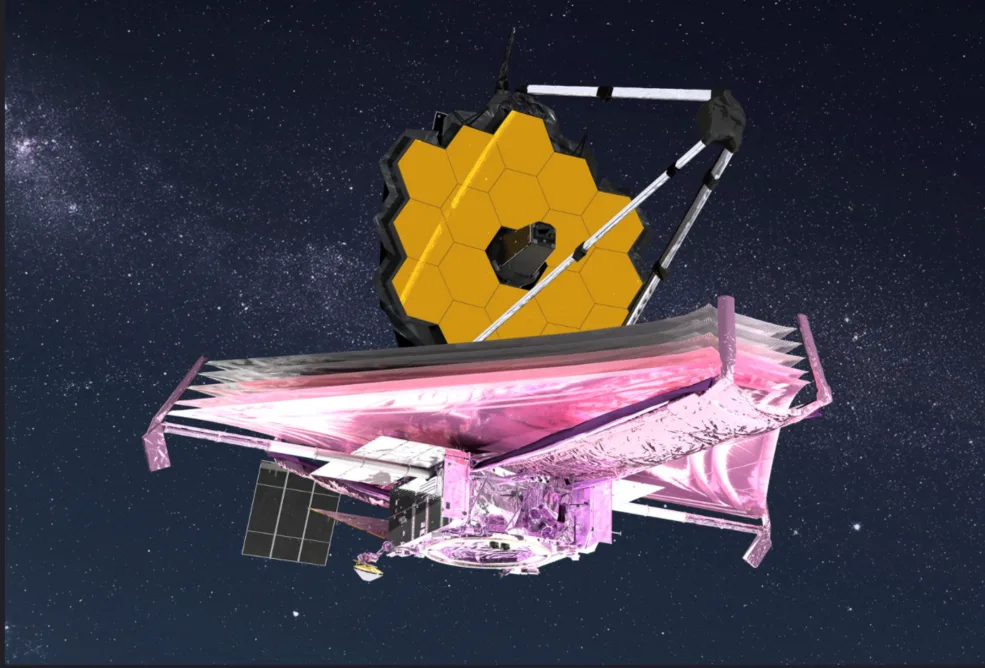
This illustration of the James Webb Space Telescope in space shows all its major elements fully deployed. The telescope was folded to fit into its launch vehicle and slowly unfolded over two weeks after launch. Credit: NASA GSFC/CIL/Adriana Manrique Gutierrez
Currently in the middle of a 1.5 million kilometre journey, Webb is on the way to a point in space known as Lagrange 2. On the way, the mission team at the Space Telescope Science Institute has been step-by-step deploying each of the telescope's main components. First was the tennis-court-sized Sun-shield, which will block out all light from the Sun, Earth, and the Moon. Then, they moved the secondary mirror into position, which will gather the light from the primary mirror and focus it into the telescope. Finally, the two side wings of the primary mirror were unfolded, and as of Saturday, January 8, the telescope is fully deployed!
"I am so proud of the team – spanning continents and decades – that delivered this first-of-its-kind achievement," Thomas Zurbuchen, associate administrator for NASA's Science Mission Directorate, said in a press release. "Webb's successful deployment exemplifies the best of what NASA has to offer: the willingness to attempt bold and challenging things in the name of discoveries still unknown."
Watch below as NASA's Livestream shows the mission team completing the final milestone of deploying the James Webb Space Telescope.
AND NOW WE WAIT...
We're still roughly 10 days out from Webb's January 23 arrival at Lagrange Point 2. Even after it pulls into its halo-orbit around L2, we still have a bit of a wait before seeing the first images from the telescope.
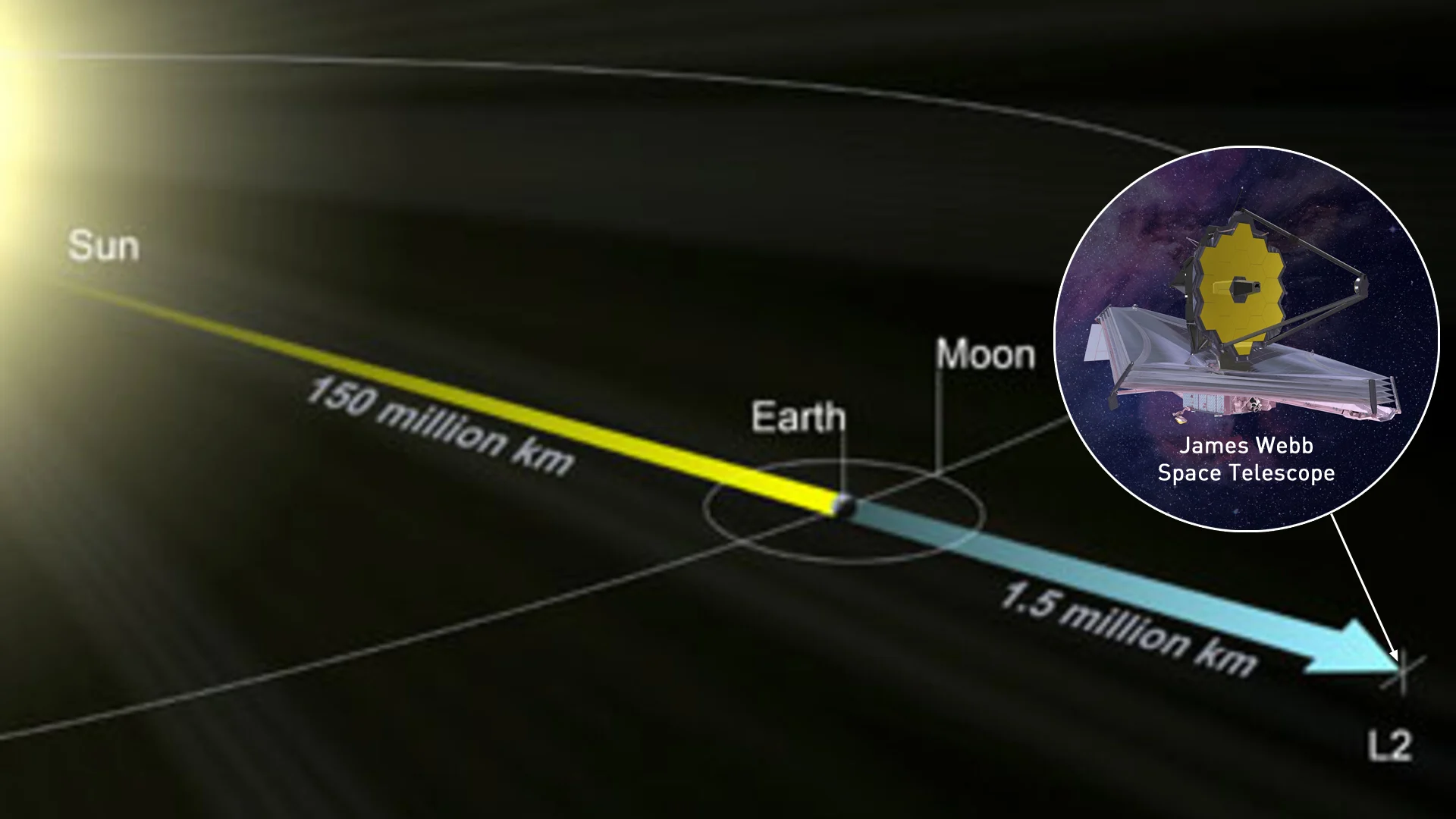
JWST will orbit around a stable gravitational point beyond Earth's orbit, known as Lagrange Point 2. Credit: ESA/NASA
The first issue that needs resolving is the telescope's temperature. To operate at peak potential, Webb's mirrors must cool down to a temperature of below -223°C, or just 50 degrees above absolute zero. In the emptiness of space, it will take time for the mirrors to shed the heat they absorbed while the telescope was being assembled, transported, and launched.
Meanwhile, the team will be testing out all of the telescope components to ensure that they are all operating correctly. Chief among these tasks is the calibration of Webb's primary mirror, which has 18 separate hexagonal sections, each capable of moving independently of the others. Any misalignment of these sections will reduce the effectiveness and power of the telescope. Thus, the mission team will be carefully and methodically going through the alignment procedures over the next four months.
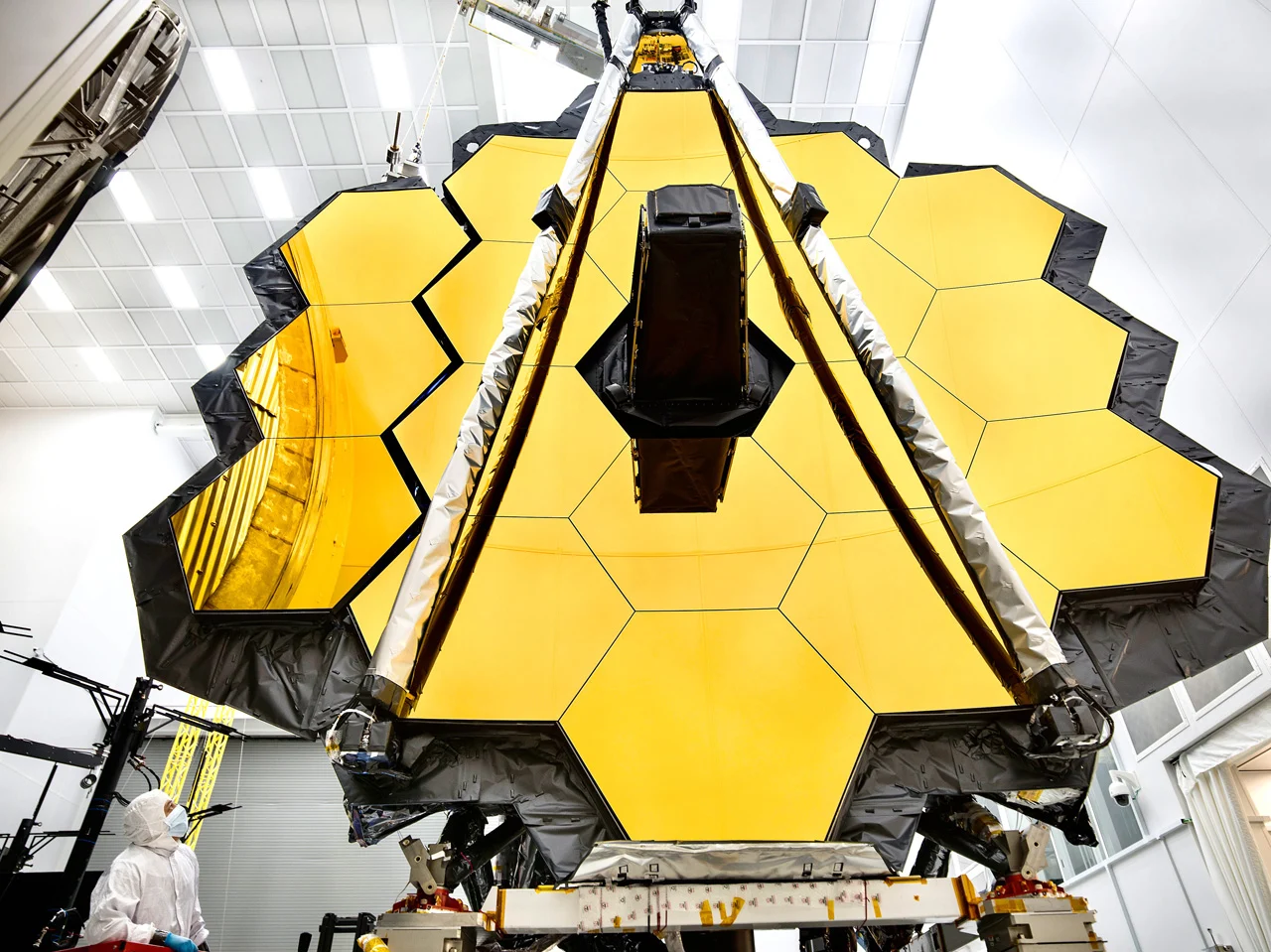
The primary mirror of the James Webb Space Telescope, with its 18 separate segments, each thinly coated in pure gold, is shown here in an image snapped from the lab in 2017. Credit: NASA/Chris Gunn
According to NASA, Webb's 'first light' images will come during that calibration process. Nearby stars and targets like the Large Magellanic Cloud — a satellite galaxy that orbits the Milky Way — will be used to focus Webb's optics. These first images will be pretty blurry, though.
According to Lee Feinberg, the Webb Optical Telescope Element Manager at NASA's Goddard Space Flight Center, after the individual mirrors are shifted into place on Tuesday, January 11, the team will collect images from each. These separate images will then be used to focus all the 18 segments together.
"When we take what we call the 'first light' of the telescope, we will be expecting to see 18 separate spots, that are probably going to be pretty blurry because everything is going to be misaligned," Feinberg said during a press conference on Saturday. "It's essentially like we're going to have 18 separate telescopes, and the first thing we're going to have to do is align those individual telescopes — the individual primary mirror segments — and then we're going to take those 18 separate spots and put them on top of one another."
Feinberg said that by 'stacking' the images on top of one another, they can then use computer algorithms to determine how far out of alignment each segment is. Then it's just a matter of adjusting the segments accordingly to bring the telescope into full alignment.
"At roughly four months into the mission, at around day 120, is when we think the entire telescope will be aligned," Feinberg said.
"I like to think of it as it's like we have 18 mirrors that are right now, little prima donnas, all doing their own thing, singing their own tune in whatever key they're in, and we have to make them work like a chorus," said Jane Rigby, the Project Scientist for Operations for the James Webb Space Telescope at NASA's Goddard Space Flight Center. "That is a methodical, laborious process."
"We want to make sure that the first images that the world sees, that humanity sees, do justice to this 10 billion dollar telescope," Rigby explained. "So, we are planning a series of 'wow' images to be released at the end of commissioning, when we start normal science operations, that are designed to showcase what this telescope can do, to showcase all four science instruments, and to really knock everybody's socks off."
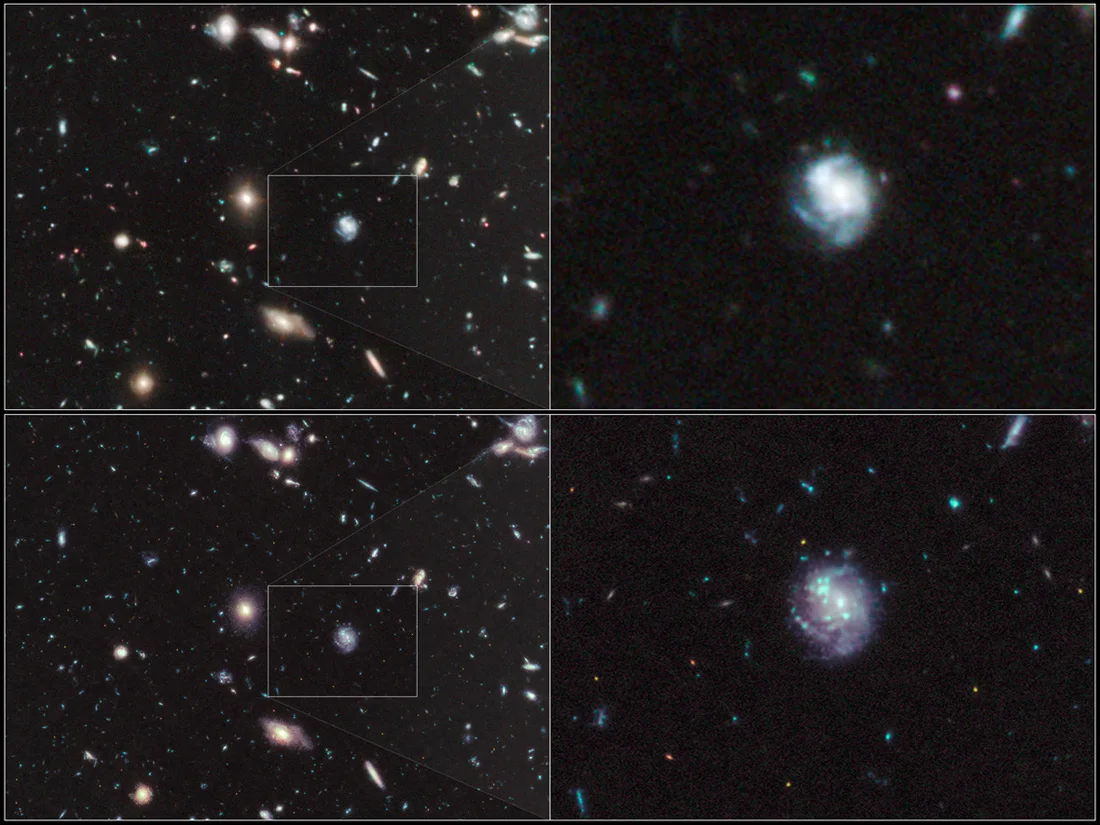
The top two panels of this image are taken from the Hubble Ultra Deep Field, showing one section of the field and a close-up on one specific galaxy in that section. The bottom two panels are simulations of what JWST would see in the same area of space. Credit: Space Telescope Science Institute (STScI) via Canadian Space Agency






